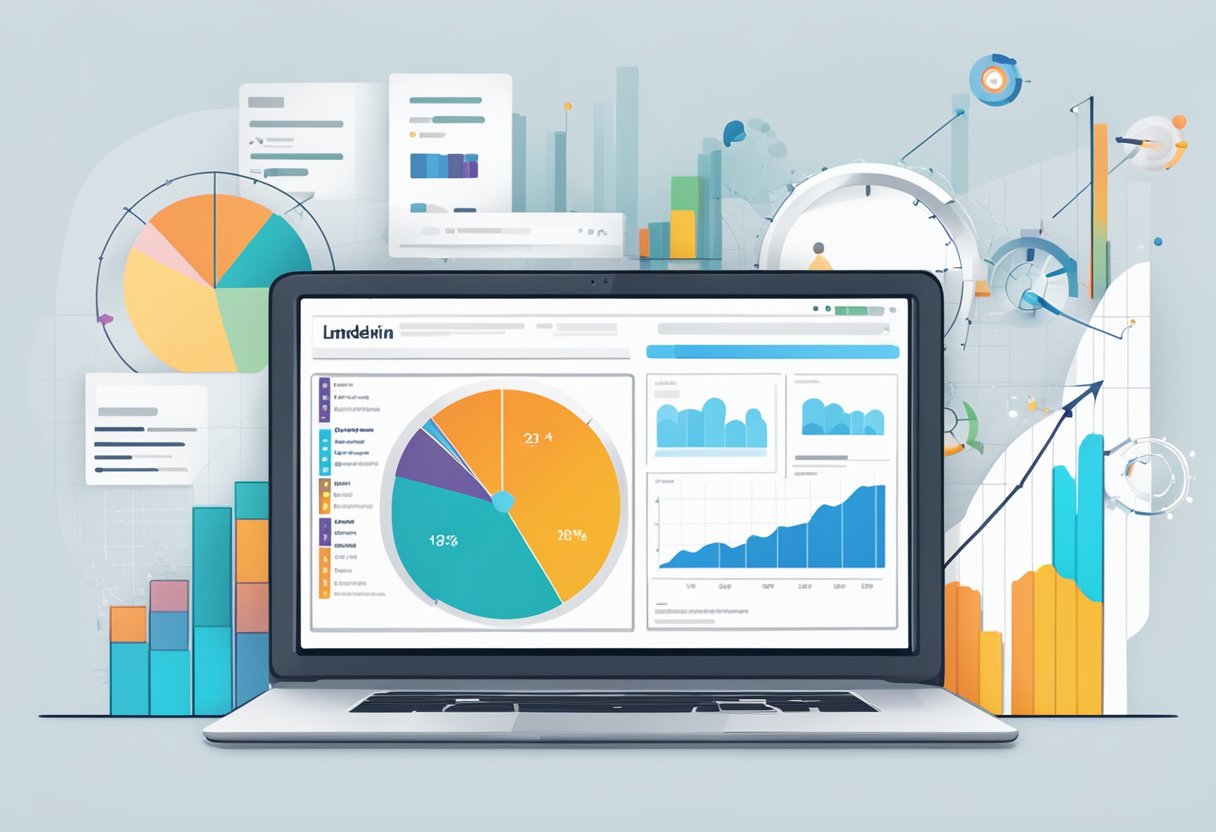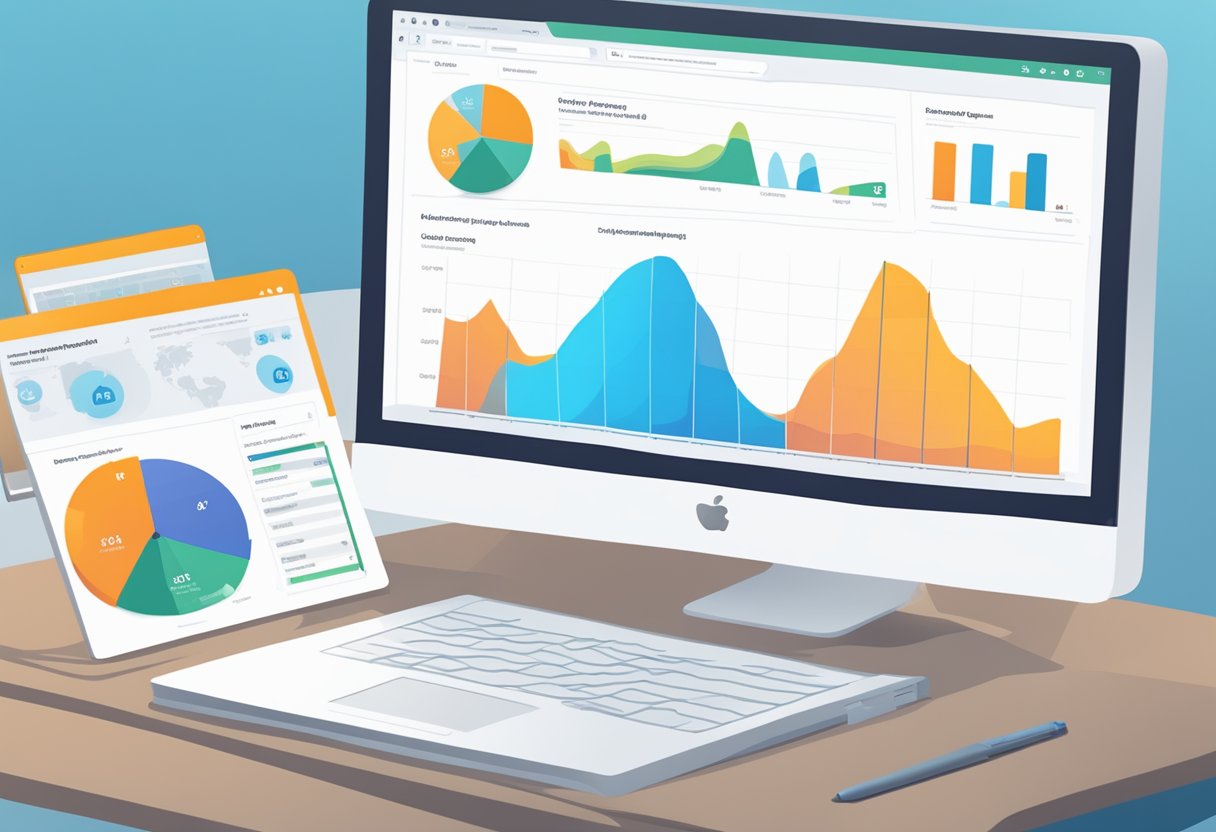Optimising landing pages for LinkedIn ad campaigns is an essential strategy for reaching the platform’s professional audience effectively. A well-designed landing page can serve as the linchpin of a campaign, providing a focused and compelling experience that leads to higher conversion rates. Beyond the basics of good design and persuasive copywriting, creating a landing page that resonates with LinkedIn’s unique audience requires a deep understanding of what drives them to engage, such as industry-specific insights or professional development opportunities.

To truly harness the potential of LinkedIn ads, integrating the technical and psychological components of landing page optimisation plays a critical role. This involves adjusting the technical elements of a landing page, like load times and mobile responsiveness, while also crafting a strong value proposition that communicates the benefit clearly and concisely. The goal is to build trust and guide visitors towards taking action, which can be enhanced by including social proof and testimonials. Additionally, continuously testing different variations of page elements can shed light on what resonates best with the target audience, therefore improving the return on investment for any LinkedIn ad campaign.
Key Takeaways
- A targeted approach can significantly improve engagement and conversions on LinkedIn.
- Trust and clear communication are paramount for convincing professionals to take action.
- Ongoing optimisation and testing are crucial for refining landing pages over time.
Understanding the LinkedIn Audience
To optimise landing pages for LinkedIn advertising campaigns, one must have a deep comprehension of the platform’s user base. Profiling the audience accurately allows for more targeted and effective marketing efforts.
Identifying Your Target Audience
An advertiser should start by defining their ideal customer. This involves understanding the customer’s job title, industry, company size, and professional interests. It is essential to craft a buyer persona that resonates with the individuals one is trying to reach. Tools such as LinkedIn’s Audience Insights can aid in this discovery, shedding light on the specific characteristics and content preferences of the audience.
Aligning with LinkedIn Demographics
LinkedIn’s demographics are skewed towards professionals seeking to expand their networks, find new opportunities, and consume content related to their industries. For instance, LinkedIn marketing solutions highlight the importance of reaching a quality audience for qualified leads. Advertisers should align their messaging and landing page design to appeal to this professional audience by using industry-specific jargon, maintaining a formal tone, and showcasing the immediate value proposition.
The Anatomy of an Effective Landing Page
Crafting an effective landing page is crucial for turning visitors into leads. Critical to this process are the components, the design, and the content that collectively serve to guide users towards the desired action.
Essential Components
The functional elements of a landing page are its building blocks. An effective page features a head-turning headline that communicates value concisely. This, paired with a clearly defined call-to-action (CTA), motivates the visitor to take the next step. Every element, including contact forms and trust signals like testimonials, must align with the overall objective, whether it’s to capture leads, sell a product, or secure registrations.
Visual Elements
Visuals can make or break the user’s experience. High-quality images or videos should complement the text, not distract from it. Utilising a strategic colour scheme can evoke emotions and actions. The use of scarcity and urgency can be highlighted through vibrant colours, underscoring the importance of acting swiftly.
Compelling Copy
The text on a landing page must persuade visitors effectively. It’s advisable to focus on the benefits of the product rather than just its features. The copy should be benefit-oriented, acknowledging the visitor’s needs and how the offering addresses them. For example, articulating the advantages that set a product apart could be more influential than just listing its attributes, as supported by insights on effective landing page content.
Technical Aspects of Landing Page Optimisation
Optimising landing pages technically contributes significantly to campaign success. Technical adjustments can lead to improved user experiences and enhanced search engine rankings.
Page Load Speed
The speed at which a landing page loads is critical for retaining visitors’ attention. Google research indicates that a page load time of one to three seconds increases the probability of a user leaving by 32%. Thus, businesses should streamline their code, compress images, and leverage browser caching to achieve faster loading times.
Mobile Responsiveness
With over half of web traffic coming from mobile devices, a landing page must display correctly on smartphones and tablets. This requires a responsive design that adapts to various screen sizes. Implementing a fluid grid layout, flexible images, and media queries are part of creating a mobile-friendly page.
SEO Best Practices
A landing page should also adhere to SEO best practices to ensure visibility in search engine results. This includes using relevant keywords in the content, crafting descriptive meta tags, and structuring URLs clearly. Additionally, ensuring accessibility through proper coding and alt text for images plays a role in SEO.
By focusing on these technical aspects, businesses can significantly improve their landing page performance within LinkedIn ad campaigns.
Creating a Strong Value Proposition
The success of LinkedIn ad campaigns hinges on the landing page’s ability to articulate a compelling value proposition. This proposition should clearly convey what makes an offer unique and why it is beneficial to the prospective customer.
Defining Unique Selling Points
A company’s unique selling points (USPs) are the foundation of its value proposition. They must identify what sets the product or service apart from competitors. For instance, a USP might be an innovative feature, a cost-effective solution, or superior customer service. These points should be specific and relevant to the target audience, ensuring they resonate with the potential customer’s needs and desires.
- Innovative Feature: “Our software streamlines project management, using AI to reduce task completion times by 30%.”
- Cost-effective Solution: “Enjoy premium features at a standard price, letting you maximise efficiency without increasing costs.”
- Superior Customer Service: “Our 24/7 customer support team is always ready, providing you with round-the-clock assistance.”
Communicating Benefits Clearly
Once unique selling points are defined, they should be communicated in a way that emphasises the benefits to the customer. This means transforming features into advantages that resonate on a personal level. For example, a feature such as “uses encrypted data” is translated into the benefit “ensures your sensitive information is always protected.”
- From Feature to Benefit:
- Feature: “Uses encrypted data”
- Benefit: “Ensures your sensitive information is protected,”
- Result: “giving you peace of mind.”
Clear communication also involves simple language, devoid of jargon, and a structure that presents information in an easily digestible format. Tick marks, bold text for emphasis, and short, precise statements aid in highlighting the most crucial benefits.
Leveraging Social Proof
In the competitive realm of LinkedIn ad campaigns, social proof serves as a decisive factor in building trust and credibility. Utilising authentic testimonials and success stories can significantly enhance the effectiveness of landing pages.
Incorporating Testimonials
Testimonials are potent tools for showcasing the value of a product or service. Here is how to optimise their use:
- Select credible and relatable testimonials that reflect the diversity of the target audience. This approach helps to illustrate the broad appeal and effectiveness of the offering.
- Integrate testimonials close to key points of conversion, such as near the call to action. Substantiation from LinkedIn advice emphasises the strategic placement of social proof to maximise impact.
Showcasing Success Stories
Success stories go beyond mere testimonials by detailing the customer journey and the transformative effects of the product or service.
- Craft narratives that focus on specific problems solved and the benefits reaped by the users. These narratives should be concise and to the point, providing tangible and inspiring examples of success.
- Highlight metrics and data to lend further authority, ensuring that the success stories resonate with potential customers and help to convert interest into action. The efficacy of using social proof in this manner is reinforced by knowledge from LinkedIn’s guidance on the topic.
Enhancing the User Experience
When optimising landing pages for LinkedIn ad campaigns, user experience (UX) is pivotal. It directly influences conversion rates by guiding users smoothly from the ad to taking action on the landing page.
Intuitive Navigation
Users expect intuitive navigation to find what they need swiftly. Clear layout and logical progression of elements ensure that the Comprehensive Guide to Landing Pages is not only reached, but its content is easily digested. Features should be familiar, and menus must facilitate quick access to information without confusion.
Clear Call-to-Action
A clear call-to-action (CTA) is arguably the most critical component of a landing page. It should be striking, using imperative verbs that compel users to take the next step—be it to subscribe, learn more, or purchase. This CTA must align with the ad in message and appearance, as explained in the guide on How to Create a Seamless User Experience from Ad to Landing Page. Strategically placing the CTA button where it is readily visible enhances its effectiveness, urging users towards conversion.
A/B Testing for Conversion Rate Optimisation
A/B testing is a critical strategy in optimising LinkedIn ad campaigns, allowing marketers to determine the most effective elements that drive conversions.
Setting Up Effective Tests
To set up an effective A/B test, one must first create two versions of a landing page: the control (version A) and a variation (version B). Key aspects like headlines, images, or call-to-action buttons should be modified in the variation to assess their impact on user behaviour. It’s crucial to ensure that each variant is shown to a similar audience segment during the same time period to accurately gauge performance differences.
- Define the goal of the test (e.g., increase click-through rate).
- Make a single change to the variant to isolate the test variable.
- Use the same metrics for both versions for direct comparison.
- Ensure statistically significant sample sizes are used to validate the results.
Analysing Test Results
Once the A/B test is complete, the results need to be analysed to understand which version performed better and why. Conversion rate is the primary metric, but one should also consider secondary metrics such as time spent on the page or the bounce rate to gain a comprehensive view of user engagement.
- Compare the conversion rates of both versions.
- Utilise visual data reports to identify patterns in user interaction.
- Consider both quantitative and qualitative data for a full analysis.
By meticulously executing A/B tests and analysing their results, one can enhance their LinkedIn ad campaigns for optimal performance and lead conversion.
Integrating with LinkedIn Ad Features

When creating an ad campaign on LinkedIn, integrating your landing pages efficiently with the platform’s ad features can lead to higher conversion rates and more effective lead generation.
Using Lead Gen Forms
Lead Gen Forms are a powerful feature designed by LinkedIn to maximise lead generation from your ad campaigns. These forms pre-populate with a LinkedIn user’s profile data, making it effortless for them to submit their information. By strategically placing a clear CTA, such as “Sign Up” or “Get In Touch”, on the LinkedIn ad, users can be directed to a landing page which utilises Lead Gen Forms to simplify the data capture process.
Advertisers should ensure that the forms are succinct, requiring minimal input from users, while extracting essential contact information. This ease of use encourages potential customers to take the desired action. With LinkedIn’s detailed targeting, these forms can be presented to a tailored audience that’s more likely to engage, which is crucial for campaigns aiming to increase immediate purchases or sign-ups.
Analytics provided for Lead Gen Forms offer insights into the types of professionals and industries engaging with your content. It is advisable to regularly analyse this data to continually refine your ad strategy and targeting parameters, thus enhancing the overall performance of your LinkedIn ad campaigns.
Tracking and Measuring Performance
Effective tracking and measuring are fundamental to optimising LinkedIn ad campaigns. It involves a detailed analysis of data to sharpen the strategy and improve return on investment (ROI).
Key Performance Indicators
To accurately assess a LinkedIn campaign, one must focus on the right Key Performance Indicators (KPIs). Typically, these include:
- Clicks: This measures the number of times users have clicked on an ad. A high click count indicates strong audience engagement.
- Click-Through Rate (CTR): The ratio of ad viewers who click on an ad compared to the total number of viewers. A higher CTR suggests the ad is compelling and relevant.
- Conversions: This is the number of desired actions taken, such as form submissions or purchases. It directly correlates with the campaign’s end goals.
- Cost Per Conversion: Reflects the cost-effectiveness of the campaign by dividing the total spent by the number of conversions.
Tracking metrics related to campaign objectives is a must, whether those are brand awareness or lead generation. For a nuanced view, one can refer to LinkedIn’s guide on analysing ad performance for a comprehensive understanding of which metrics to track.
Continuous Improvement Strategy
An effective strategy for continuous improvement requires regular data analysis and refinement. This may involve:
- Testing Variations: Create different versions of landing pages and compare their performance.
- Leveraging Analytics: Use LinkedIn analytics to gain insights into user behaviour and preferences.
- Applying Changes: Implement data-driven adjustments to enhance the landing page performance.
Consistent evaluation using a feedback loop helps pinpoint what resonates with the target audience and what needs recalibration. For incremental improvements, understanding and actioning upon the analytics is key to success.
Landing Page Compliance and Best Practices
Creating optimised landing pages within the LinkedIn platform not only enhances user engagement but also ensures adherence to specific advertising standards. To maximise the effectiveness of your LinkedIn ad campaigns, it is critical to understand and apply the platform’s outlined best practices and policy requirements.
Adhering to LinkedIn’s Advertising Policies
LinkedIn’s advertising policies provide a framework for what is acceptable within the platform’s guidelines. Advertisers must ensure that their landing pages are:
- Truthful and Accurate: All claims on the landing page must be substantiated, avoiding any misleading information.
- Professionally Presented: The content should be well-organised, with proper grammar and spelling, adhering to professional standards.
- Respectful of User Privacy: Advertisers must honour user privacy by not misusing any data collected from the landing page.
- Secure: Landing pages must use HTTPS to protect user information.
- Free from Prohibited Content: The content must not contain anything that LinkedIn deems offensive, illegal, or inappropriate.
For specific requirements, you can review the guidelines on how to use landing pages effectively for your LinkedIn ads. Advertisers found in violation of these policies may have their landing pages or entire campaigns suspended, impacting their ability to reach potential customers.
Frequently Asked Questions
Optimising landing pages is crucial for LinkedIn ad campaigns’ success, focusing on tailored content and user experience to drive conversions.
What are the best practices for creating an effective LinkedIn landing page?
Best practices for constructing a LinkedIn landing page include conveying a sense of urgency and clarity in the offer. The landing page must align with the ad’s message, showcase compelling value propositions, and possess a clear call-to-action. It’s advisable to use high-contrast colours, such as yellow or red, to draw attention to time-sensitive offers, as indicated by LinkedIn’s marketing solutions success stories.
How can I enhance my LinkedIn ad conversions through landing page optimisation?
To improve ad conversions, ensure that the landing page has a straightforward overview of the offer, an accessible form for lead generation, and clear information about the product or service. Embedding social sharing buttons can also encourage broader dissemination. Prioritising user experience and page performance is essential, as detailed by HubSpot’s insights.
What key elements should be included on a landing page to improve LinkedIn campaign performance?
A successful landing page should include persuasive design, concise copywriting, effective call-to-actions, and trust signals. By refining these elements, conversion rates can measurably increase. The importance of each factor in crafting a high-converting landing page is discussed by ABmatic.
What techniques can be used to promote a landing page effectively within LinkedIn?
Promoting a landing page within LinkedIn effectively involves using event ads, creating LinkedIn events, and highlighting these in the campaign to extend the event’s reach. Clear goals like brand awareness and event sign-ups should be targeted. Techniques for event ads can be reviewed in the Complete Guide to LinkedIn Ads in 2024 by Hootsuite.
How does the LinkedIn Campaign Manager tool integrate with landing page strategy?
LinkedIn Campaign Manager plays a pivotal role in landing page strategy, offering tracking and analytics features which inform about page performance and visitor behaviour. This integration enables advertisers to tailor their landing pages based on data-driven insights, enhancing the effectiveness of their campaigns.
In what ways can the design of a landing page impact LinkedIn ad campaign results?
The design of a landing page can significantly influence the outcomes of an ad campaign on LinkedIn. It should be user-centred, mobile-optimised, and visually coherent with the brand’s ethos. A well-designed page with a succinct, action-inducing headline can lead to higher engagement, as highlighted by LinkedIn’s Marketing Solutions Help.
Looking for a digital marketing agency that can help drive leads and sales? Check out Flow20’s service for SEO, Pay Per Click (PPC), LinkedIn Ads and more…..





